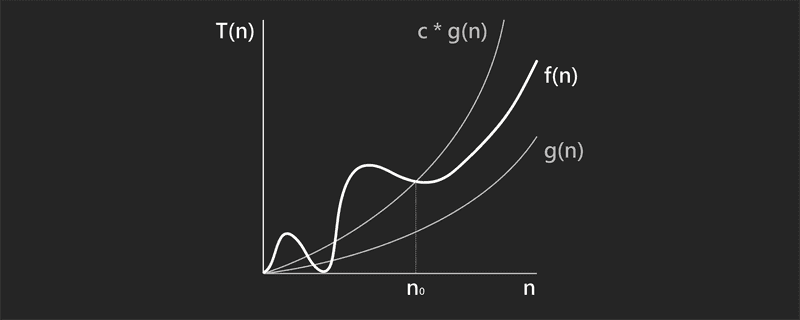Complexity
Jun 2, 2025
What is Complexity
The complexity of an algorithm is a measure of the resources required to run it.
The factors regarding the input are closely related to complexity, often indicated
by alphabets such as n and m.
For example, if a one-dimensional array is the input, its size, such as n, is a
crucial factor.
Big O Notation
Big O is a mathematical notation used to describes the limiting behavior of a function when the argument tends towards infinity. In other words, Big O represents the order of growth of a function.
When calculating Big O, it only cares about the dominant terms.
For instance, consider a function f(n) = 2n2 + 3n + 100.
If n is very large, or even infinite, coefficients such as 2 at the highest term
and lower terms like 3n and 100 aren't important because they don't significantly
affect the result, even without considering them.
Therefore, O(f(n)) = O(n2).
In math, there are many asymptotic notations, but Big O is widely used in computer science.
#Definition
Big O is defined as asymptotic upper bound or the worst case.
f(N) = O(g(N)), if there exist positive constants c, N0 such that
f(N) <= C, g(N) for all N >= N0
 Lingo: "f(N) grows no faster than g(N)."
Lingo: "f(N) grows no faster than g(N)."
Order
1 < log n < √n < n < n log n < n2 <
n3 < 2n < 3n
< n! < nn
| INPUT | 1 | n | n2 | 2n | n! | nn |
|---|---|---|---|---|---|---|
| 1 | 1 | 1 | 1 | 1 | 1 | 1 |
| 2 | 1 | 2 | 4 | 4 | 2 | 4 |
| 3 | 1 | 3 | 9 | 8 | 6 | 27 |
| 4 | 1 | 4 | 16 | 16 | 24 | 256 |
| 5 | 1 | 5 | 25 | 32 | 120 | 3,125 |
| 6 | 1 | 6 | 36 | 64 | 720 | 46,656 |
| 7 | 1 | 7 | 49 | 128 | 5,040 | 823,543 |
| 8 | 1 | 8 | 64 | 256 | 40,320 | 16,777,216 |
| 9 | 1 | 9 | 81 | 512 | 362,880 | 387,420,489 |
| 10 | 1 | 10 | 100 | 1,024 | 3,628,800 | 1,000,000,000 |
Time Complexity
Time complexity refers to estimating the duration of an algorithm's execution based on the number of operations it performs.
Below is a function code including an array parameter with n elements.
It runs a for loop which contains three lines of operations n times.
Thus, its time complexity is O(n * (1 + 1 + 1)) = O(n).
#def print_all_elements(array):for index in range(len(array)): # loop: n timesprint(array[index]) # line: 1if index == len(array)-1: # line: 1print('--- End ---') # line: 1python
Space Complexity
Space complexity refers to estimating the total space required by the algorithm.
Below is a function code including a number parameter, n. It runs a for loop
which allocates a new space n times and perform other operations without
additional space. Thus, its space complexity is O(0 + n * 1 + 0) = O(n).
#def list_all_positive_numbers(n):array = [] # space: 0for num in range(n): # loop: n timesarray.append(num) # space: 1return array # space: 0python
In-place
In-place means that an algorithm operates directly on the space of input parameters without requiring additional space relative to the input factors. The strict definition includes O(1) space complexity.
#